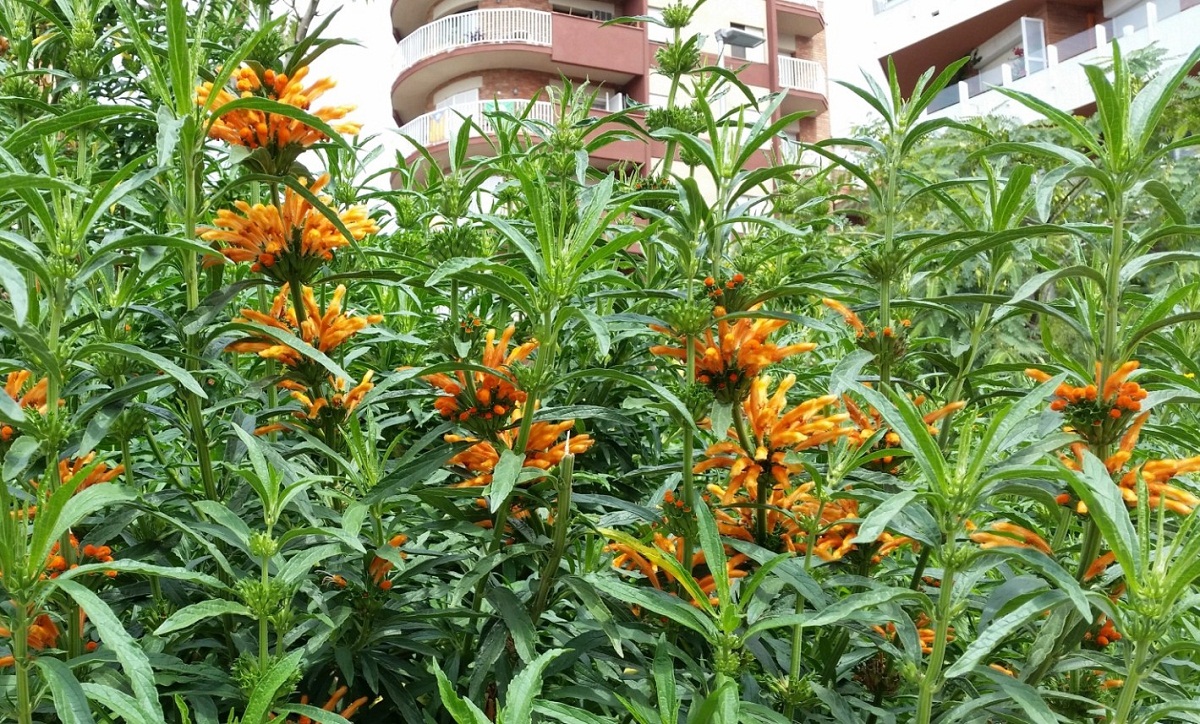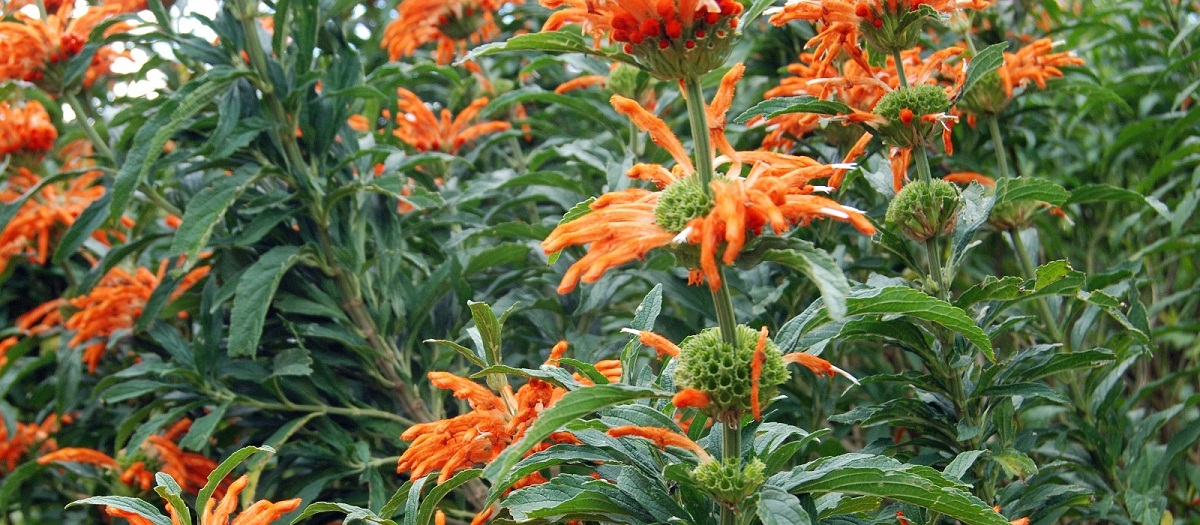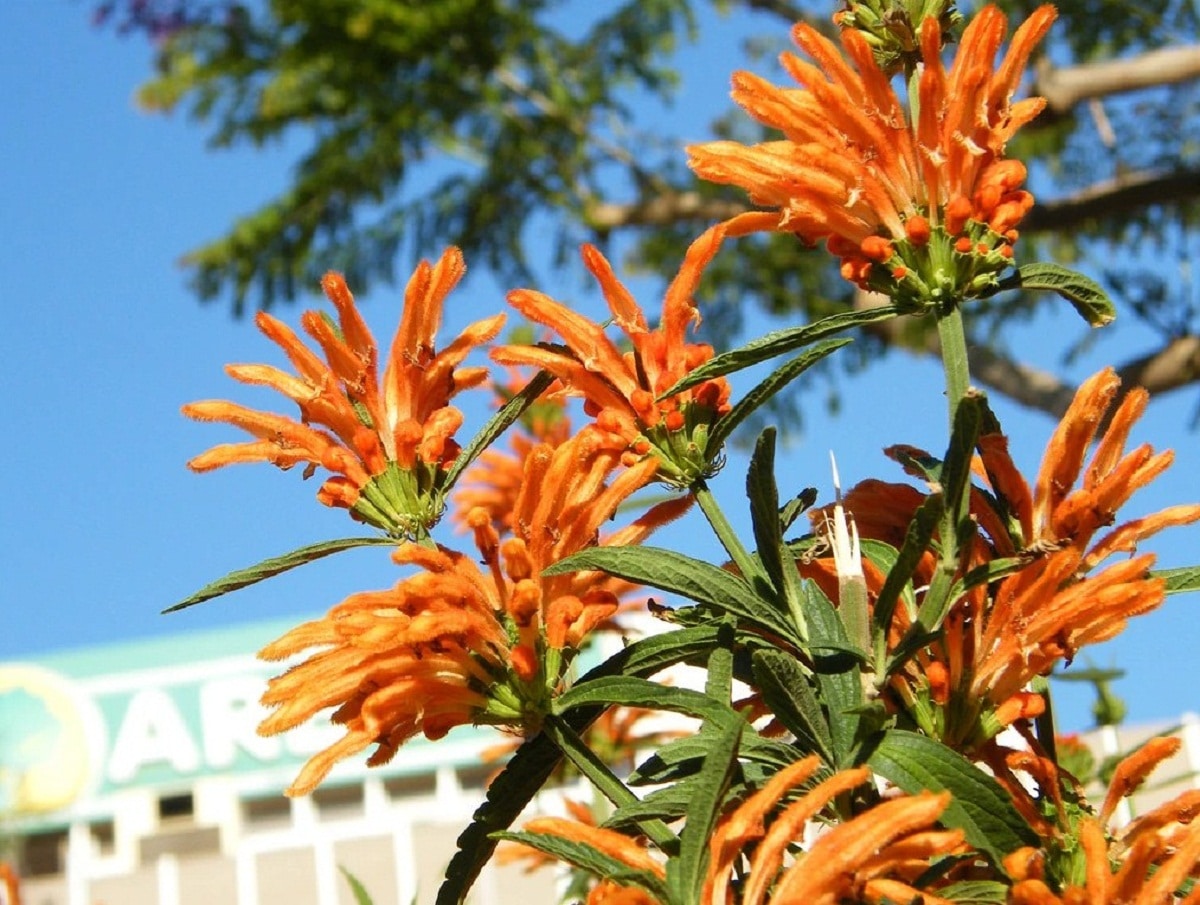
La Leonotis leonurus it is a plant native to southern Africa, which has been used since ancient times in a spiritual, medicinal and recreational way and it is precisely due to the wide variety of uses that it has, that it has managed to position itself as a herb of great importance within various cultures.
Also called the lion's tail, This plant is a colorful and wonderful specimen belonging to the mint family, which has been used since ancient times due to its slightly psychoactive effects.
Origin of Leonotis leonurus

Hailing from southern Africa, in areas inhabited by indigenous tribes believed to have used it for the first timez, stands out for having effects very similar to those caused by cannabis, although more subtle, which is why it is called Wild Dagga, which would be translated as “wild cannabis”.
But although it is slightly psychoactive, This herb is characterized by being totally legal within most of the countries; Furthermore, due to its incredible appearance, it is often cultivated as an ornamental plant. In the same way, we can point out that its flowers stand out for being quite resinous and for having a high nectar content, which allows it to attract fauna.
And because of the legal status it has, this herb is commonly used as a mild substitute for cannabis, since despite not being really the same, it allows to achieve a similar psychoactive experience but a little less intense.
Her CARACTERISTICS
La Leonotis leonurus is a shrub that grows about 2m tall, whose stems differ by having a quadrangular section. It has lanceolate and opposite leaves which can reach approximately 7-10cm long and 2cm wide. Its flowers are borne vertically around the axils of the upper leaves; Likewise, they bloom between spring and autumn, and tend to grow around 6cm long, standing out for being bright red or orange.
How to plant it?
By counting on the seeds of Leonotis leonurus (which it is necessary to verify so as not to confuse it with other similar), it will be time to start growing it. When the weather turns out to be good enough, it is possible to grow it outdoors without problem, however, when the weather is cooler, it is best to plant it in pots that can be easily protected during the coldest days; in any case, make sure it has good drainage.
About your care
Next, we will talk about some points to keep in mind about lion tail care:
- It is also characterized by being a very simple plant to grow. abroad when it comes to areas with a Mediterranean climate, relatively close to the coast.
- Although it is not a very demanding plant in terms of the type of soil, the truth is that it usually prefers the slightly clay soils.
- It is necessary to place it in an area exposed to sunlight and do not forget that the lion's tail is not capable of resisting frost, although it supports well periods of drought.
- It is necessary to prune this plant well during the spring so that it can re-sprout with greater force, and throughout the other times of the year it is enough to remove those leaves and branches that are dry.
- The multiplication through its seeds is usually quite complicated, although the opposite turns out when doing it with the cuttings; in addition, it has to be carried out during the spring or in the fall.
A plant widely used in traditional medicine
Traditional medicine has used this bush, before cooking, orally and topically in order to treat multiple pathologies and ailments, such as headaches, hemorrhoids, constipation, itching, eczema, etc. In the same way, both its leaves and its dried flowers have been smoked for the purpose of alleviating the ailments caused by epilepsy, as well as to treat spider bites and also cobra bites.
However, we must point out that scientists dedicated to their research have indicated that studies must continue in order to guarantee their quality, efficacy and safety in future patients, apart from those who have resorted to its use exclusively because of the medical effects it has.
What are its effects?
The effect of this bush, consists of the same as that of mild sedatives; it may produce a slight euphoria, while increasing the feeling of both well-being and relaxation in users. However, we must mention that it does not have the powerful blow that cannabis offers, and also that it usually takes a short period of time before manifesting itself when used progressively.
This plant has also been used, in a traditional way, due to the antispasmodic properties that it has, as well as being a great antihistamine. Also, other common applications of the Leonotis leonurus They consist of using it to treat menstrual and digestive problems, colds, coughs, skin problems, parasites and even snake and spider bites, as we previously pointed out.
Uses
The lion's tail features leonurine, a chemical component which stands out for having been widely used within traditional medicine for the purpose of treating a great variety of ailments including, apart from the already mentioned pathologies, also fever, hemorrhoids, dysentery and asthma.
Both its leaves and its roots are used to prepare a treatment created especially for cure snake bites, as well as to use it as a natural remedy to keep these reptiles away.
The infusions prepared with its leaves and flowers are used in the treatment of tapeworms. In addition, its branches are usually added to warm baths in order to alleviate certain conditions, for example, itching and cramps. Similarly, it has been considered a great weight loss treatment.
Finally, we must also say that the aqueous extract present in its leaves has great antidiabetic and anti-inflammatory properties, which are of great help in alleviating and keeping various ailments under control, arthritic conditions and different inflammatory pathologies, highlighting type 2 diabetes mellitus developed in adulthood.
The most traditional and frequent application consists of smoking it alone and / or accompanied by other mixtures, and even better, in a vaporized form, because in this way you can achieve a better and greater inhalation of the active compounds it has, which are usually destroyed by the combustion process.

*Herb
Hello Graciela.
It is a shrub this plant. Thanks.